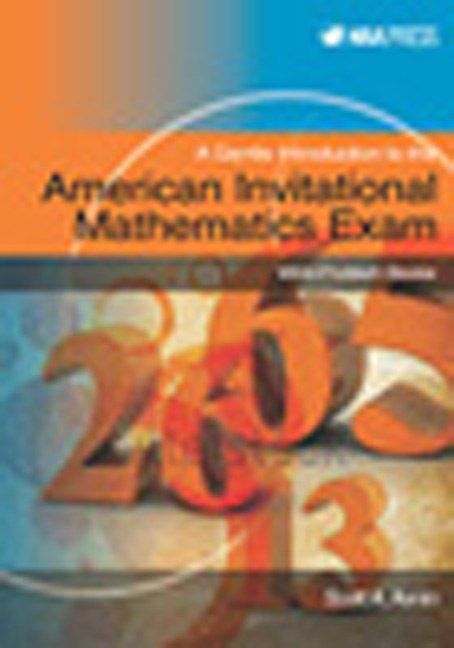Book contents
- Frontmatter
- Contents
- Preface
- List of Abbreviations and Symbols
- 1 Algebraic Equations
- 2 Combinatorics
- 3 Probability
- 4 Number Theory
- 5 Sequences and Series
- 6 Logarithmic and Trigonometric Functions
- 7 Complex Numbers and Polynomials
- 8 Plane Geometry
- 9 Spatial Geometry
- 10 Hints for the Exercises
- 11 Solutions to Exercise Sets
- Answers to All Exercises
- About the Author
- Index
8 - Plane Geometry
- Frontmatter
- Contents
- Preface
- List of Abbreviations and Symbols
- 1 Algebraic Equations
- 2 Combinatorics
- 3 Probability
- 4 Number Theory
- 5 Sequences and Series
- 6 Logarithmic and Trigonometric Functions
- 7 Complex Numbers and Polynomials
- 8 Plane Geometry
- 9 Spatial Geometry
- 10 Hints for the Exercises
- 11 Solutions to Exercise Sets
- Answers to All Exercises
- About the Author
- Index
Summary
Then, my noble friend, geometry will draw the soul towards truth, and create the spirit of philosophy, and raise up that which is not unhappily allowed to fall down.
— Plato, The RepublicIntroduction
Geometry is a beautiful branch of mathematics rich in connections to mathematical history. Interesting solids, shapes, and geometrical patterns occupy the world we live in, and many of them are extensions of what can be drawn on a two-dimensional plane. In any art museum, mathematics, and specifically geometry, abounds and is applied in fascinating ways to make beautiful creations. A central problem in geometry is to study geometric notions including length, angle measure, area, and volume. Our focus on volume will be postponed until Chapter 9, which is devoted to spatial geometry (in three-dimensional space). In this chapter, we will begin our study of geometry in the two-dimensional plane with the other geometric measures.
Every AIME contains a collection of geometry problems that involve such shapes as triangles, parallelograms, circles, trapezoids, and others. The problems explore relationships between lengths, angles, and areas in a variety of shapes. In this chapter, we study numerous useful results and examples involving these shapes. The trigonometric functions we explored in Section 6.3 can often be used to study the problems, as we shall see. The material in Chapter 7 is also relevant, since the complex number plane is just that, a plane that offers the prospect of a simultaneous study of plane geometry and complex numbers to the mutual benefit of both. This has indeed been done in the AIME competition (see Section 8.4).
The next two sections will focus on triangles and circles. Before we begin, let us take a few moments to review some of the basic information about lines and angles that will be useful. It is expected that readers have been exposed to this material through a text or course that emphasizes geometrical concepts. Therefore, the review will be brief so that we can pass quickly to examples from the AIME competition. Readers needing or wanting a more comprehensive overview of fundamental concepts in geometry are urged to consult other sources.
Measurement of angles is important in the study of triangles. One of the most important pieces of knowledge about triangles, for instance, is the fact that the sum of the measures of all three angles of a triangle must sum to 180◦ (or π radians).
- Type
- Chapter
- Information
- Publisher: Mathematical Association of AmericaPrint publication year: 2016



